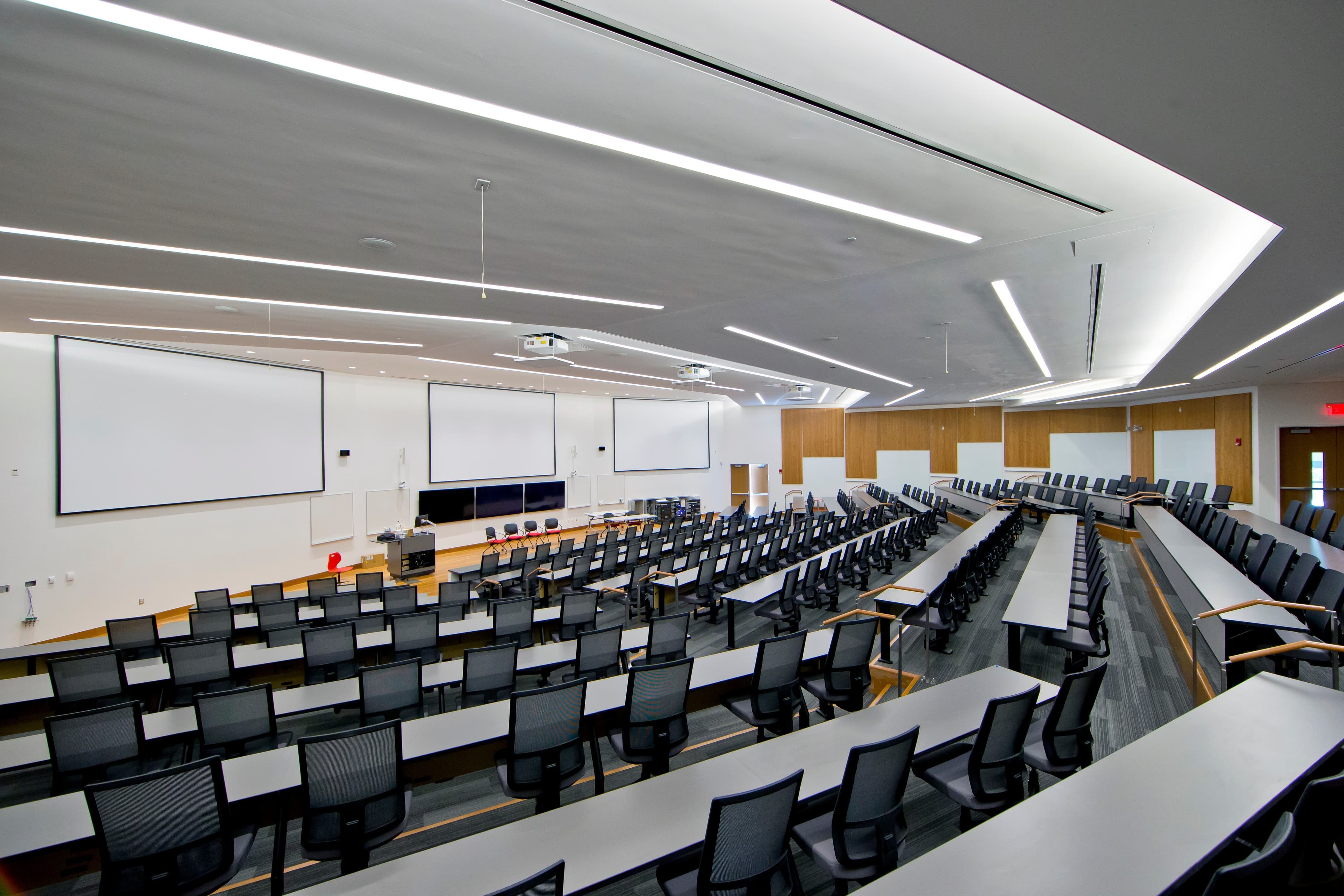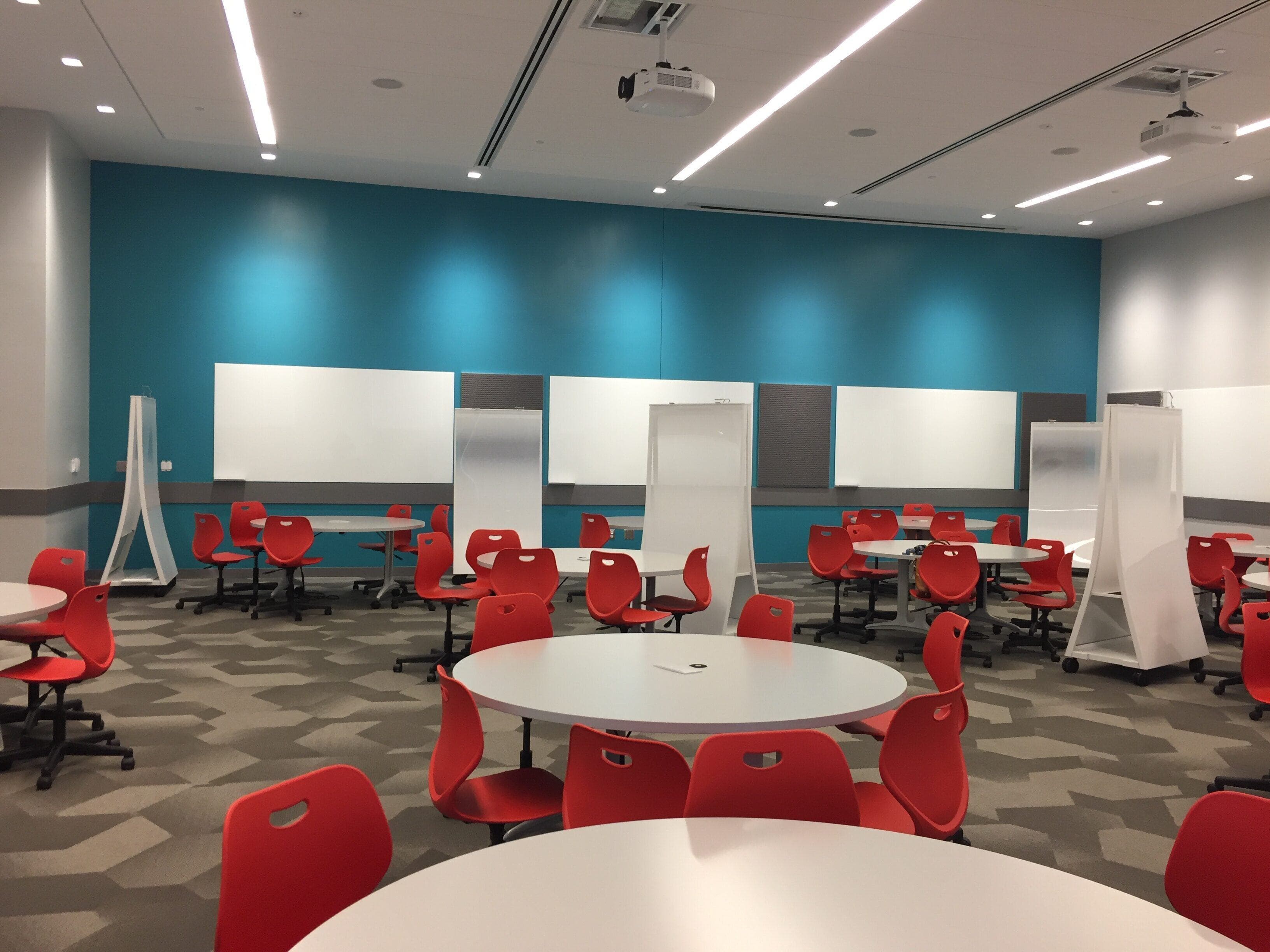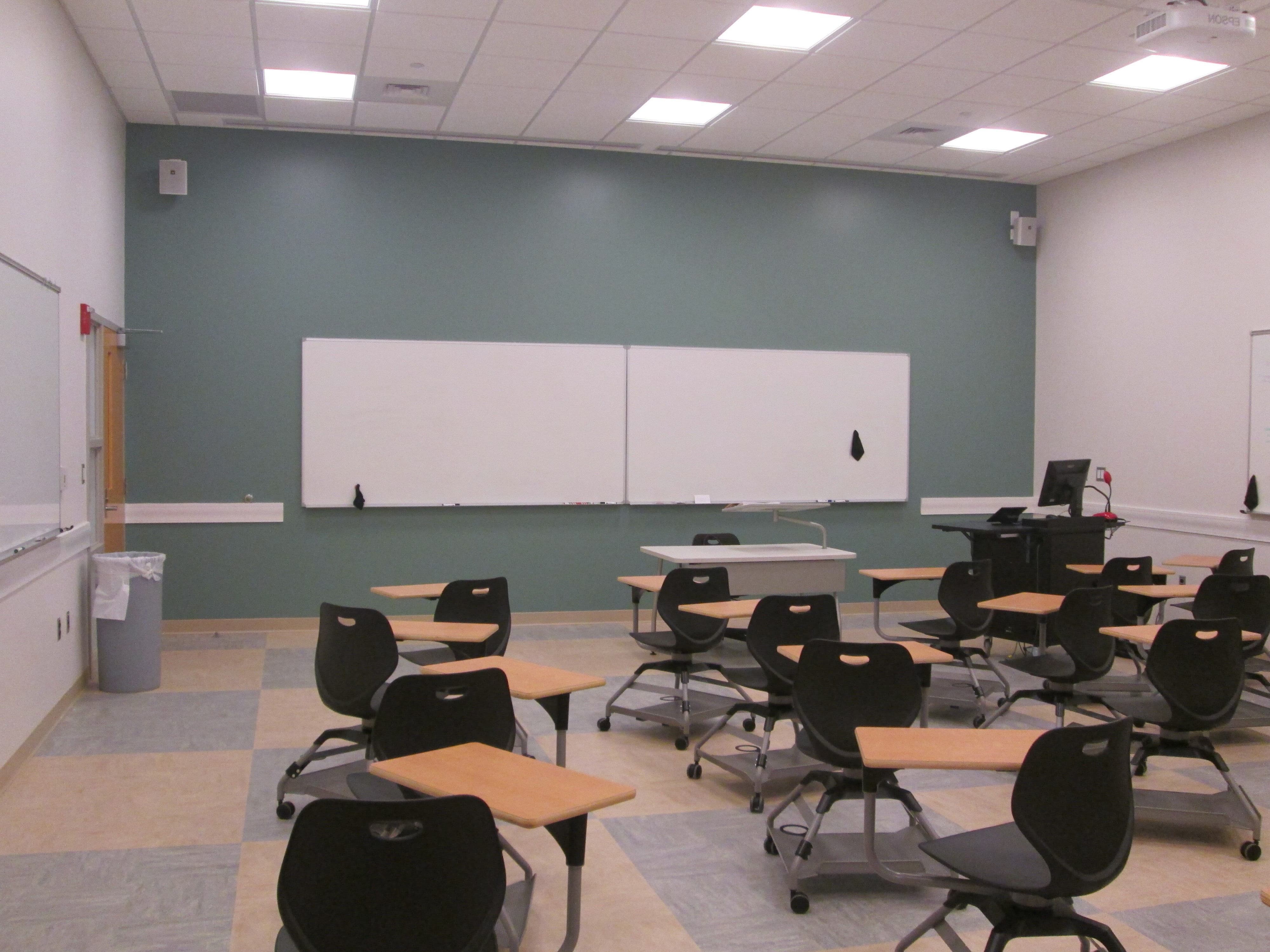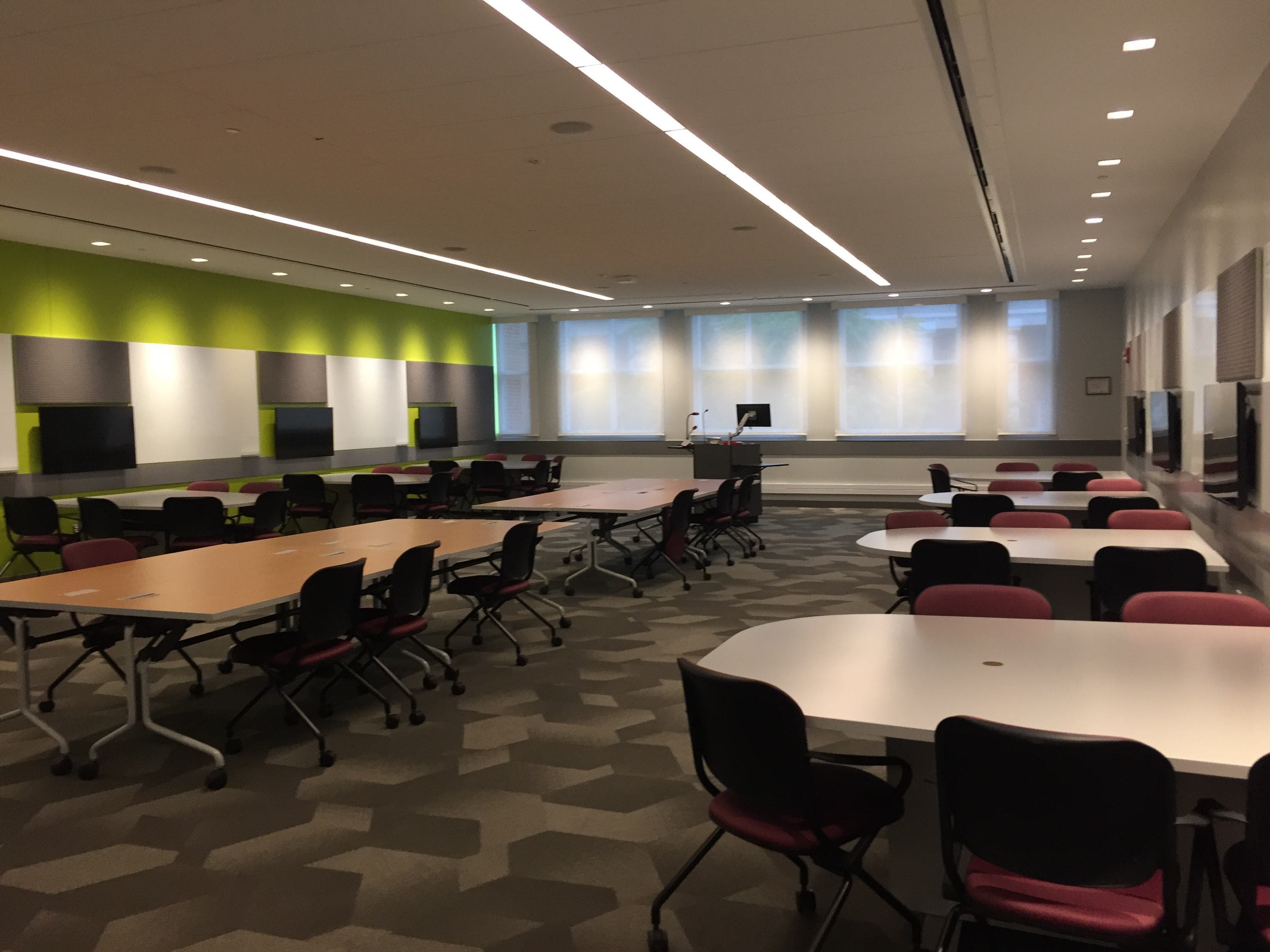Resources
TERP Classrooms
The University of Maryland is committed to creating classroom environments that support collaborative team-based modes of teaching and learning. The goal in creating these new and renovated technology-enhanced spaces around our campus is to promote student-centered teaching practices by creating environments that enable every person in the classroom to Teach, Engage, Respond, and Participate.
TERP Classrooms are:
- Flexible, technology-enhanced spaces that accommodate a variety of teaching and learning styles
- Environments free of traditional barriers where students and instructors can more easily interact with one another
- Spaces with furniture and technology solutions that allow students to work in groups, collaborate, and master cooperative learning technique
The first TERP classroom was created in 2013. By 2024, 20% of the General Purpose Classroom Inventory will be converted to support active learning. To provide continuity between classroom resources on campus, four primary types have been created: Tiered-Collaborative, 6Round, Eye2Eye, and Media Share.




Tiered-Collaborative
6Round
Eye2Eye
Media Share
Tiered collaborative rooms offer specialized fixed seating arranged on tiers that are two rows deep. The seating along the front row of each tier can turn around 180 degrees, allowing students in each pair of rows to easily collaborate around a central table for team-based exercises.
6Round spaces are designed without a primary teaching wall; they have round tables where students sit in groups of six throughout the space. Marker boards are situated on the perimeter walls adjacent to each of the round tables, and the av control station is positioned to allow the instructor to circulate easily around the room. Projection screens on multiple walls allows viewing of up to two images simultaneously from any seat in the room.
Highly flexible furnishings in the form of mobile student desks with tablet arms and integrated storage compartments (or mobile student tables and chairs) allow these spaces to be quickly reconfigured in any number of arrangements throughout the day to suit a variety of interactive activities. In addition to projection screens, the perimeter walls feature abundant writing surfaces.
Media Share rooms offer peninsula-style student tables that flank the outer walls of the room. Each station is equipped with a computer where students may work together on projects in groups of six and share content via the screens with the entire class through a dynamic software package.
TERP Classroom Resources
Visit 25Live and select “TERP Classrooms” under Public Location Searches.
UMD academic departments may reserve space through their scheduling officer. If you do not have a scheduling officer, please email schedule@umd.edu with your request or visit Classroom Search.
The Edward St. John Learning and Teaching Center (ESJ) features thirteen TERP classrooms and nine state-of-the art chemistry teaching labs, complimented by a wide variety of informal collaborative learning and study spaces throughout the building.
The Teaching and Learning Transformation Center (TLTC) inspires and supports effective, engaging, efficient, and equitable teaching innovations among the University’s instructors and assistants. Their team provides faculty, students, and staff with training, resources, professional development activities, and individualized consultation to transform their classrooms and careers.
